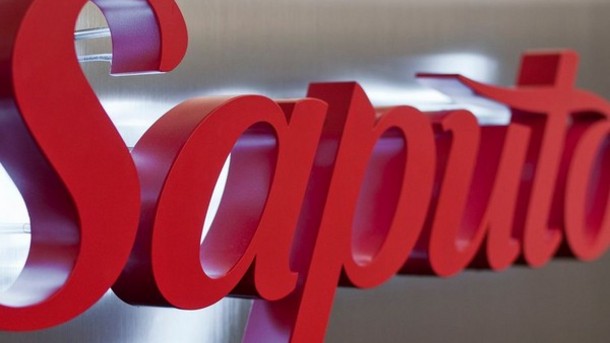by Liz Ann Sonders, Chief Investment Strategist, and Kevin Gordon, Charles Schwab & Company Ltd.
Valuation metrics broadly look more attractive relative to where they were a year ago, but history shows they don't provide clear guidance on future returns.
A hallmark of this current reporting season is analysts' aggressive cuts to estimates for growth. Nearly a year ago, the consensus expectation for fourth-quarter growth was +10.4%; that has since been cut to -2.8% as analysts have come to terms with stickier input costs and a decline (albeit uneven across sectors) in revenue growth.
The fast pace of downward revisions hasn't been confined to 2022 earnings, though. The latest estimates from Refinitiv pin full-year 2023 S&P 500 earnings at $219. As shown in the chart below, that is a steep drop—to the tune of -12%—from the $249 peak in estimates last June. In fact, it's only $1 above the index's total earnings in 2022. Looking out to 2024, estimates for full-year earnings have been cut from their peak by -9%. Declines for both years are at odds with the dynamic present in 2020 and 2021, during which analysts cut too much and eventually had to revise estimates higher.
Earnings estimates (finally) falling

Source: Charles Schwab, I/B/E/S data from Refinitiv, as of 2/15/2023. Forecasts contained herein are for illustrative purposes only, may be based upon proprietary research and are developed through analysis of historical public data.
That doesn't mean investors should assume an implosion in earnings. Yes, the average S&P 500 earnings decline during recessions has been well into the double-digit percentage range. At this stage in the cycle, however, we are nowhere close to that kind of drop. That said, certain sectors—notably the pandemic beneficiaries—are at risk of more downward pressure, especially companies that over-hired, were slower to adjust for higher labor costs, and are no longer benefiting from inflation-driven revenue growth.
Valuation station
With prices rebounding since October, downward pressure on earnings has pushed P/Es higher. That has made the market look relatively more expensive over the past couple months. That brings us to our popular valuation "heat map," covering a wide array of equity valuation measures—some of which are probably familiar, and others that are a bit more arcane.
Before getting to the heat map's messages, a public service announcement is in order: Valuation analysis is somewhat crude, subject to interpretation, influenced by inflation (among other things), and often impacted by investor sentiment conditions. In terms of the latter, it's why we often remark that valuation is as much a sentiment indicator—or better put, an indicator of sentiment—as it is a "fundamental" indicator of the market's inherent attractiveness.
As noted above, inflation has historically had an impact on valuations. With the Federal Reserve embarking last year on its aggressive monetary policy tightening cycle to combat the ravages of a four-decade high in inflation, the impact was felt acutely on the stock market. When inflation is soaring, and rates are rising, the present value of future earnings and cash flows declines.
Shown below is the aforementioned heat map with two markers for each metric: the black "Xs" show what the reading was for each metric as of the start of January 2022 (when the bear market began), while the black bars denote the most recent reading. Unsurprisingly, several valuation measures with a profit or economic metric in the denominator have declined sharply. Conversely, yield-based metrics (such as the Fed model and equity risk premium) have gotten relatively more expensive courtesy of the rise in interest rates.
Reducing the heat a bit

Source: Charles Schwab, Bloomberg, The Leuthold Group. For illustrative purposes only. Black bars as of 2/15/2023. Black Xs as of 1/3/2022. Percentile ranking is shown from lowest in green to highest in red. A higher percentage indicates a higher rank/valuation relative to history.
For the first time in a while, the equity risk premium has crossed the chasm into overvalued territory (albeit not to an extreme), given it remains more attractive relative to most peer metrics. The move speaks to the precipitous rise in interest rates over the past year. There is income in fixed income again, putting bonds back into play when compared to stocks. Compelling yields hadn't been attractive relative to stocks' earnings yields for nearly a decade. Consequently, higher yields are starting to challenge the attractiveness of the equity market's valuation.
Definitions
- Forward P/E: Divides the current S&P 500 price by 12-month forward expected operating earnings per share.
- Trailing P/E: Divides the current S&P 500 price by 12-month trailing operating earnings per share.
- 5-year normalized P/E: Uses four years of historic earnings, two quarters of forward earnings; taking the midpoint between reported and operating earnings (a take on Shiller's CAPE, but with a shorter time span, and with an adjusted earnings calculation).
- Price/book: Divides the S&P 500 price by the book value of its components per share.
- Price/cash: Measures the value of the S&P 500 relative to its operating cash flow per share.
- Dividend yield: Compares the current dividend yield on the S&P 500 with both historic averages and the 10-year U.S. Treasury yield. At near-equivalent yields, the market is seen as fairly valued.
- Shiller's Cyclically Adjusted P/E (CAPE): Uses an inflation-adjusted price for the S&P 500 and divides by reported earnings over the prior 10 years.
- Rule of 20: Stocks are considered fairly valued when the sum of the S&P 500 forward P/E ratio and the year-over-year change in the consumer price index (CPI) is equal to 20 (or inexpensive when it's below 20).
- Equity risk premiums: Subtracts either the forward 10-year U.S. Treasury bond yield or the forward Baa corporate bond yield from the forward S&P 500's earnings yield (E/P). Positive readings suggest stocks are undervalued relative to bonds.
- Fed model: Compares the S&P 500's earnings yield (which is the inverse of the P/E—or E/P) to the yield on long-term U.S. government bonds. Negative readings suggest favoring stocks over bonds.
- Tobin's Q: Developed by Nobel Laureate James Tobin, it's a fairly simple concept, but laborious to calculate (calculations are done by the U.S. government and the ratio's readings are provided by the Fed). It's often called the Q Ratio and is the total price of the U.S. stock market divided by the replacement cost of all its companies. A high Q (greater than .85) implies overvaluation.
- Market cap/GDP: Considered Warren Buffett's "favorite valuation indicator," it's the ratio of total U.S. market capitalization to gross domestic product (GDP).
In sum
All that said, valuations of any kind haven't historically provided anything resembling clear guidance regarding future returns. In particular, they can't serve as the arbiter in a bull vs. bear debate. But for longer-term investors, they should remain in the toolbox when assessing the relative attractiveness of investments (either at the individual stock or overall asset-class level).














